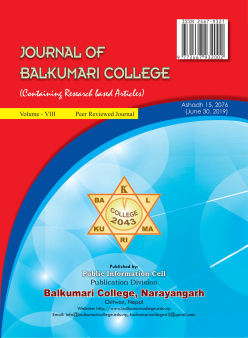Systematic Approach to Establish DNA Barcode of Medicinally Important Plants in Nepal
DOI:
https://doi.org/10.3126/jbkc.v8i0.29311Keywords:
DNA barcoding, MatK, rbcl, ITS species identification, DNA extraction, PCRAbstract
DNA barcoding is an emerging tool for species identification that uses internationally agreed protocols and regions of DNA to create a global database of living organisms. Initiatives are taking place to generate DNA ba rcodes for all groups of living organisms make these genomic identity publically available to understand, conserve, and utilize the world 's biodiversity. Most of the terrestrial plants are characterized using two section of coding region within chloplast, part of chloroplast gene, a more conserved rbcl and more polymorphic MatK gene. In order to create high quality databases, each plants are characterized not only with the rbcl and MatK DNA sequences, an additional sequence information from internal transcribed spacer (ITS) region is more efficient. The quality of barcode depends on the various factors such as efficient primers, purity of DNA templates, as well as the quality of PCR amplicon from which the sequence data will derive. The protocol described here led to the generation of high efficient PCR amplicon which will aid in the minimization of erroneous DNA sequence infonnation from which bioinformatics procedure will generate efficient barcodes. The primers used to amplified MatK, rbcl and ITS sequence were MatK-4 13f-1 and MatK- 1227r-1, rbcl-1F and rbcl-724R, ITS1 and ITS4 showed a strong amplification successes of 80% of each in the tasted medicinal plants of Nepal. This study propose that the used sets of primers and amplification condition will help, in part, the development of DNA barcode for medicinally important plants of Nepal to conserve their identity with its nativeness.




